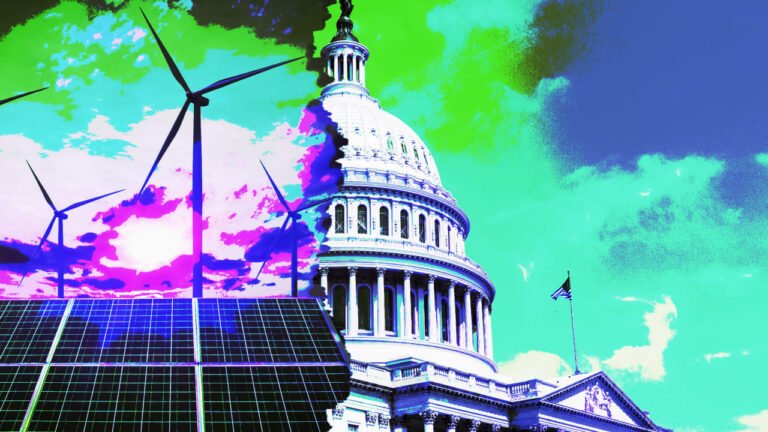
If we took everything at face value, today’s media headlines, studies, and overall assumptions about the next generation currently entering the workforce could be considered true. Unreliable. Entitled. Difficult to work with. Zero work ethic. Screen-obsessed, except on Zoom calls because their cameras are always off. Unwilling to work in the office or collaborate with others.
These are just a few of the stereotypes overshadowing Gen Z, the youngest generation in the workforce and, apparently, the bane of business leaders around the world.
Personal Experience
They also remind me of what I personally experienced when I started my professional career in the late 2000s.
My first professional opportunities were often marked by generational biases and unintentional leaders who made it more difficult to grow my skills and gain the experiences necessary to mature as a leader. I was told I didn’t “look like a leader” and that I looked “more like a celebrity or influencer than a traditional businessperson,” which is both inappropriate and unhelpful.
It’s also a bad reason to decline to provide the proper coaching or professional development opportunities that would have helped young professionals like me thrive.
As a millennial and the leader of a New York City-based public relations agency, I also have my own unique experience breaking out as a young founder. I often navigated client meetings, partner negotiations, and overall business operations. I had to be the most strategically minded person in the room while simultaneously being the youngest person there.
Collectively, these experiences prompted me to cultivate a different culture for the next generation. They shaped my approach to leadership and mentorship.
More Than a Stereotype
As a leader always looking for new PR talent, I often received comments about how mature and advanced my leadership abilities were for someone my age, especially as a young senior leader.
People were surprised that someone from my generation could be at the advanced stage at which I found myself in my career. I have since taken that learning and applied it to the young professionals who I manage today.
In other words, I infuse in them the expectation—versus the surprise or doubt—that they can advance as quickly as they can put their mind in action to do so.
No assumptions
As Gen Z navigates the complicated professional world following the 2020 pandemic disruption to their educational and personal lives that no other generation since the early 1900s flu epidemic had to navigate, I take any and all assumptions about this generation with a grain of salt. I’m placing a deep investment in helping them realize their dreams.
I’m not surprised that leaders in today’s business world, almost like incumbents, are raising red flags about the new arrivals, mistaking differences for deterrents. That’s been true of every new generation to enter the workforce.
These leaders undermine not only their industries but also the broader business landscape and, ultimately, the very companies they claim to serve, forgetting that today’s entry-level employees are tomorrow’s breakthrough innovators, mid- or senior-level managers, and changemakers.
An opportunity and obligation
Amid all the negative buzz on the state of Gen Z workers, so many overlook that Gen Z brings real value to the table right now.
As leaders, we have the opportunity and the obligation to seek out aspirational talent, treat them like who they could become, and meet them where they are as the ultimate support approach to help them get to where they ultimately could be.
If leaders aren’t flexible enough to connect with and bridge differences in the workplace, collaborate more effectively, and help raise the next generation of talent to the highest level, they have lost the most important aspect of cutting-edge leadership: the ability to adapt to a continuously changing environment while continuing to lead effectively.
That means inducting the next generation into America’s workforce with open arms, open hearts, and a teachable mindset.
But How?
Today’s leaders must stop focusing on Gen Z’s divisive stereotypes. They need to start focusing on the individuals they meet—who may be from any generation, but especially this generation—to unlock their unmistakable talent and innovative potential.
Here’s how.
1. Start Early
Focus on cultivating talent at the internship level.
For burgeoning professionals, the word is out: Internships matter, and they are clamoring for hands-on learning opportunities.
At my agency, we receive a deluge of applications every season, selecting just a handful for an interview. Only a few will receive an internship offer.
This selectivity allows us to best invest our time and attention in every intern. We spend a lot of time ensuring each intern fully understands the task at hand, so they can work for us and with us, not just complete low-level tasks without guidance or growth-minded intention.
We value our interns in the same way we value all our team members.
While some will find that PR isn’t their thing (and you will find that some of your interns are not the right fit for your company or industry), others will become rock stars who we want to cultivate into full-time team members.
Ultimately, we want our interns to know exactly what it’s like to work at a PR agency so that whether we hire them or they move on to the next opportunity, they are in a position to succeed.
Everyone benefits when we take this approach.
2. Mentor at Each Phase
Mentorship is for everyone. Whether seasoned executives or fresh faces out of college, we all have room to grow.
Even as the owner of the company, there’s still work to do.
This isn’t diminutive. It’s empowering.
Mentoring gives the right guidance to the right people at the right time so they feel successful at work, value their position, and want to stay longer. It’s a win-win-win.
Practically, effective mentoring empowers executive decision-making by stepping back and being available but at the same time making Gen Z-age professionals accountable for making decisions.
3. Invest in Connection
As a busy leader, connecting with people often feels like the last thing I can smash into my schedule. It’s also the most important.
With my team, daily personal engagement consists of team touch bases at 9:30 a.m. Eastern time (10:30 a.m. on Fridays) and 4 p.m. Eastern time Monday through Thursday, with an additional casual 12:15 p.m. meeting for water cooler discussions.
The team operates virtually with set hours from 8:30 a.m. to 5:30 p.m. Eastern time, balancing structured connection points that typically last 20 to 30 minutes, with flexibility for personal appointments and family needs.
4. Prioritize Recreation and Celebration
Regardless of generation, people want to be seen. That’s why we prioritize recreation and celebration.
Notably, for every birthday and work anniversary, we send flowers to employees and make birthdays special with social media shout-outs and advance planning to ensure proper recognition.
Our team also holds two major annual celebrations—a summer retreat and family party—and we invest our time and money to give employees time away from work to feel celebrated and acknowledged for their hard work throughout the year.
All these celebrations are deliberately planned to make employees feel special and valued, with an emphasis on ensuring these are genuine breaks from work responsibilities.
5. Live by Example
At the end of the day, teaching is only as effective as your practice. Even as Gen Zers develop their own opinions, perspectives, and preferences, they are looking at leaders and taking notes.
For my staff, this means that on vacation time, we prioritize true disconnection, requiring employees to set up out-of-office documents and making it a team effort to avoid contacting vacationing colleagues unless the situation is urgent, which I demonstrate by being unavailable during my own vacations.
Outside of business hours, I don’t contact employees unless it’s urgent, believing people need downtime to feel fresh for the next day, and we actively avoid blurring lines between personal and work life to prevent frustration.
What we do is more valuable than what we say, so we should take care to practice what we preach.
Ready or Not
Gen Z workers aren’t on their way. They are here. Now.
We can continue to accentuate their most sensational characteristics, or we can get to work, recognizing that every new generation brings unique values, perspectives, and competencies to the workforce.
We can cultivate these through intentional mentorship, structured support, and genuine investment in their growth. As a business leader, I’ve discovered that Gen Z brings fresh perspectives, digital fluency, and innovative thinking to our organization.
Their approach to work-life integration, commitment to purpose-driven careers, and ability to adapt to rapid change aren’t weaknesses. As the older range of the Gen Z generation approaches their mid-twenties in 2025, they need to be recognized as assets that we should all embrace and integrate now because, ready or not, Gen Z is part of today’s workforce, and only moving upward from here.


